- Home
- Piers Anthony
Kirlian Quest
Kirlian Quest Read online
Kirlian Quest
Cluster series
Book 3
Piers Anthony
Cover illustration by Ron Walotsky.
Copyright © 1978
ISBN: 0-380-35113-7
CONTENTS
Prologue
PART I KIRLIAN
1 Abatement of Honor
2 Child of Grief
3 Kastle of Kade
4 Child of Pleasure
5 Duke of Qaval
6 Siege of Psyche
PART II QUEST
7 Site of Mars
8 God of Tarot
9 Geography of Aura
10 Moderns of Ancients
11 Cluster of Sites
12 Amoeba of Space
Epilogue
Cluster Political Geography
Prologue
He never looked through a telescope. He was perhaps the leading research astronomer of Galaxy Milky Way: experienced, capable, intelligent, and of high-Kirlian aura. He formed an ear-horn to listen to audios, and an eye-stalk to view the graphics, and he pooled comfortably in his basin while he worked. He was a creature of repute, but by no means a hero; there was little in his makeup to suggest that he had the capacity to become involved in Cluster adventure. In fact, his type went into shock at the mere threat of extreme danger.
He specialized in Fringe-Cluster phenomena. The major galaxies of Andromeda and Milky Way did not really interest him, and the lesser structures like Pinwheel and the irregular galactic satellites were hardly more intriguing. It was the far-out fragments, dwarf ellipses, and globular star-clusters that compelled his attention. He knew more about "wild" globs and nongalactic stars than any other creature of the Cluster.
Now his attention focused on the Amoeba—a tiny pseudonebula hardly a hundred light-years in diameter. It was a nonluminous, diffuse, vague shape hidden behind the dwarf elliptoid called Furnace—itself worth contemplation as the "missing link" between the tiny globular clusters and the small elliptical galaxies. Yet the fifteen-thousand-light-year diameter of Furnace loomed monstrously compared to the tiny haze of the Amoeba. In fact, the Amoeba had not even been discovered until the past century, as it was virtually invisible to all conventional observation techniques.
The astronomer formed a second eye and contemplated a holograph of the Amoeba. It appeared to have a number of projecting pseudopods, each curving slightly; this was what had given it its name. Overall it was amazingly regular; the pseudopods seemed individual and evenly spaced.
Its discovery had been largely serendipitous, a result of the Cluster survey program instituted after the Second War of Energy. After twice narrowly averting destruction of their galaxy, the coalition of species of the Milky Way intended to keep fully informed of all future developments in the Cluster. The most powerful Segments—Qaval, Etamin, Knyfh, Lodo, and Weew—had pooled their resources and manufactured the largest fleet of spaceships ever known: 125 billion strong. But they were very small ships, any one of which an average-sized sapient could have lifted in a single appendage without effort. Each contained perceptive apparatus, mainly optical, and a tiny molecule mattermitter. They were dispersed around the entire outer surface of the Cluster, accelerating to one-tenth the speed of light and then drifting outward until they were, theoretically at least, eventually recovered by the gravity of the Cluster. Every ten years each unit mattermitted back what was visible from its quota of space. Each ship was about ten light-years from its neighbors, and so was responsible for a surface area of a hundred light-years; its report was normally current within about seven years. Thus no major intrusion into the Cluster could escape detection; the Net would report it long before the light reached the nearest galaxy.
The Net had been in operation for almost a thousand years. As the fear of alien intrusion had abated, the main beneficiaries of this expensive program had been the astronomers and stellar cartographers. The entire Cluster had been mapped with phenomenal accuracy—retroactively. For the Net reported what it saw—and it saw what the Cluster had looked like up to a million years before, because of the time it had taken the plodding light of distant stars to travel.
The section of the Net launched from Furnace had penetrated a hundred light-years into space—and picked up the Amoeba. Only two specific reports on it existed, and neither was remarkably clear, for it remained at the fringe of the Net's awareness. Only specialized research astronomers such as this one were able to perceive anything of significance there. To the untrained eye, it was only a faint haze against the backdrop of deep space. Perhaps merely a smear on the image, or some distortion of the lens.
He substituted the second holograph, taken from the same units ten years later, or one light-year closer. The image was very similar and a bit sharper, but a trifling discrepancy caught his attention. He reactivated the first holograph, projecting it in modified color, and superimposed it on the second. He grew a third eye on a long stalk, so that he could study the superimposition from three directions at once.
The two images differed, even after adjustment for slightly differing ranges. There seemed to be a slow rotation of the subject. He compensated for this, aligning the curved arms of it precisely, magnifying the smaller image until its absolute perspective exactly matched the scale of the other.
There was no doubt The Amoeba had expanded. The projections extended some five light-years farther than before.
What constituted the substance of this obscure, minor formation? Not gas. The refraction indices of the wan light of distant background galaxies were wrong. Not dust; that would have blotted out such light entirely. The indications were so fuzzy; there simply was no way to properly analyze a dark obscuration without going there, and it would take the local units of the Net the better part of another century to pass through the physical Amoeba. Mattermission directly to the Amoeba could not be used until the first receiver was delivered, and Transfer required a living host already present. A number of attempts to Transfer there had been made, all without success. There appeared to be no sapient life in the Amoeba. And why should there be? Life normally required the services of a sun; it could hardly evolve in the great abyss that was intergalactic space.
The holographs did not resolve any bodies of planetary size. Indications suggested that the Amoeba consisted of perhaps a million fragments of rock, none larger than a planetoid. An assemblage of meteoroids, like a monstrous comet, way out in Fringe-Cluster space. An anomaly! Which was what made it so intriguing.
Possibly it was the remnant of a planetary explosion, and its expansion reflected the continuing impetus of that cataclysm. Even so, there were questions. The planet could not have been formed in deep space; it had to have coalesced or come from somewhere. This cloud of fragments had not been traveling, for the two holographs would have shown the change in position that marked that velocity; instead the Amoeba was virtually stationary with respect to Furnace.
It had not coalesced; prior holographs going back a thousand years showed no dust cloud there. A dust or gas cloud was easier to track than a planetary body, because it spread over a much greater volume of space and obscured far more background light, however faintly. Instruments could analyze this, though it might be too subtle for the naked sapient eye. Not that such an accretion from gas or dust could have occurred in so brief a period. No, the planet had to have been there before, invisibly small, and exploded approximately two hundred years ago, after remaining quiescent for at least a hundred years.
But there had been no explosion of that magnitude. The sensors of the Net would have picked up such radiation within a few decades, instead of having to wait to come into dark-body perception range. In fact, the telescopes of Sphere Furnace would have caught it within a century—and they had not. So there had be
en no explosion—at least, none of the force required to propel elements of the planet outward at a significant fraction of the speed of light.
Yet the Amoeba was there, and it was growing. It could not have resulted from an explosion anyway; it was not an expanding shell of debris, but a growing semi-material structure. The arms were elongating, or extending from the center, almost like a living thing. Yet it was only gravel—wasn't it?
A mystery indeed! There had to be some explanation, for the thing existed. The astronomer did not propose to wait decades for new evidence from the Net. He was the Galaxy's leading research astronomer, and he had all the information anyone had. This was the kind of challenge that gave his life meaning!
For days he labored over his references, checking and rechecking. He did supplementary research, seeking new insights. He meditated, and viewed the holographs with as many as six eyes simultaneously, and put them on sonic translation and listened with several ears. His well-trained, subservient maid brought him food and carried away his refuse; he never moved from his basin. He would crack the riddle of the Space Amoeba before he left here!
News circulated, for nothing the ranking experts did was entirely private. A tremendous breakthrough must be in the offing! Other astronomers studied the Amoeba, hoping to upstage the master, for this was a highly competitive field. But they could not solve the mystery; data were insufficient, and there was much more pressing business. It was not as though it were an important subject, this far-distant tentacular system of dead pebbles.
Suddenly, in the privacy of his office, the researcher stiffened. @The Space Amoeba is—@ he exclaimed in his native language. Then he sank into shock.
His loyal maid summoned the authorities, and they rushed him to the medical center for treatment. But the astronomer lay puddled in his basin, oblivious. They could not revive him.
They knew that the force of his insight about the Amoeba had done it. His species was subject to such shock when faced with overwhelming danger. It was a defensive mechanism that had often saved individuals before, rendering them insensate and pliable enough to survive severe abuse. Obviously in this case there had been no direct physical threat. They knew the matter had to be supremely important, for no minor revelation would have had this effect on such an expert. Therefore it was necessary to ascertain the specific nature of the intellectual shock, in case it affected others of the culture.
No doctor of the Segment could bring the astronomer out of it. They could not fathom how the distant Amoeba could threaten anyone here, but they dared not gamble on their ignorance. So they made an arrangement with the leading shock-technician of the Cluster: a super-Kirlian entity of Sphere Slash, Andromeda, named Herald the Healer.
PART I
KIRLIAN
1
Abatement of Honor
& All units drift by for geographic review. &
0 Action units 1 through 9 drifting by. 0
X Research units A through Z drifting by. X
& Target Cluster now in range. Geographic unit report. &
G Two full-scale Galaxies, one small Galaxy, all spiral, six ellipses, seven irregulars, assorted lesser fragments. Overall, typical small Cluster. Nomenclature of local sapients: Milky Way, Andromeda, Pinwheel, Furnace, Sculp, Cloud 9, Cloud 6. G
& Dispense with detail listing; local species identifiers will shortly become passé. &
His host-body was a peculiar amalgam of loops. He was not certain whether it was all in one jointless string or whether it branched and rejoined at twisted intervals. It had no disks, feet, or treads; on a flat surface it would have been a disaster.
*There are no plane surfaces here,* the host-mind informed him. *No flatnesses. Do not be concerned. I shall convey you safely wherever you wish.*
/Appreciation,/ Herald replied, employing his own mode of intonation, though of course he used the language of Sphere Ast. /I come to encounter Whorl of Precipice./
Immediately the body moved. It twisted up and through a lattice of stone, spun around an angled ceramic column, and tied into a metal basket-frame. This in turn moved, following a flexible line through an astonishing network of shapes. Commercial transport, of course, but a far beam from the forthright geometry of Herald's own Sphere.
They came into a cavern laced with stalactites. The host halted abruptly and withdrew his personality, yielding full control to the Transferee. Herald realized that he had arrived.
An entity that was superficially like his host convoluted up to meet him. A loop of its body touched Herald's form, and moved in the sensation-language of this species. This one had a good aura of about fifty. *Welcome, expert of Slash,* he pulsed. *I am Whorl of Precipice.*
Herald's normal mode of expression, modulated laser, was even less well suited to inter-entity communication than to internal-host dialogue. But a certain perverse pride of origin caused him to employ it anyway. The result was a tactile rendition that seemed affected.
/I am Herald the Healer./
*Your incredible aura needs no introduction! Just what rating, if I may ask, is it, precisely?*
/Two hundred thirty-six./ Herald was used to such queries, and suffered from no sense of intrusion of privacy. He had the most intense Kirlian aura ever measured, higher even than those of the famous historical characters Flint of Outworld and Melody of Mintaka, from whom it was said he was deviously descended. Their auras had come to historical prominence in the Wars of Energy; there was now no war, so he had made his aura part of his profession.
*Two hundred and thirty-six times normal!* Whorl exclaimed in a violent vibration.
/You have purchased one unit of my time,/ Herald reminded him. /It commenced when we met. You will not wish to waste it./
*Your fee is high, but I feel that only you will be able to help me.*
/I do not guarantee it. Some maladies are not amenable to my art./
*This one surely is. I require the answer to a single question—and you, as the greatest living blazoner, surely have the information.*
/Surely,/ Herald agreed. /I shall of course blazon an Achievement for you. That is the other facet of my profession./
*Unnecessary. I have my Shield of Arms. I merely wish... an interpretation.*
/You have wasted your fee! Any heraldic scholar of your own Sphere can give you an interpretation at the merest fraction of what you are paying me, and it will be quite as accurate. Heraldry is a fixed art; there is little leeway for interpretation. Perhaps even a text can provide what you require. Surely your Planetary Library—/
*I queried the library once. Not again!*
Herald perceived fluctuations in the entity's aura. There was an emotional charge to the matter. So it was not a strictly routine query, as quite often his cases weren't. Herald's fee was high because he brought extraordinary ability into play. Still he affected a certain modesty. /If you feel my particular interpretation is worthwhile, you shall have it. Yet it will not differ materially from—/
*Let me explain. The Family of Precipice is of recent formation. It required some difficult maneuvers on my part for me to gain... are you familiar with the hereditary mechanisms of our Sphere?*
/My business requires me to be conversant with the derivations for Shields of Arms in many Spheres. Beyond the legal procedures I become vague about specifics, until some particular case requires my spot education. I do not, for example, comprehend precisely how your five-sex mode of reproduction operates; I have not felt it necessary to pry into such private matters. Is this information necessary for proper application to your question?/
*Perhaps not. I mention it only passingly, then. We do not, despite widespread belief in other Spheres, possess five sexes. Rather our quintuplets consist of four complementary males and one female. Our procedures for the selection of particular types of males for family continuity depend on the types of interfamily liaison desired. Suffice to say, the matter can become complex, and at times certain family lines must be legally discontinued and new ones constitute
d. Development of a new family therefore requires a new Shield of Arms, with impalements representing the critical ancestral elements.*
/This is elementary, Whorl, though I point out as an aside that your use of the term 'impalement' is imprecise. Impaling is the specific process of marshaling arms together by mounting them side by side on the Shield; it can only be done by pairs. Thus your shield is actually—/
*Please, I am not conversant with every technical detail. Otherwise I would not need to summon an expert.*
/Of course. My apology, Whorl. But this being the case, I trust you engaged a competent heraldic artisan to design and execute your Achievement?/
*I insisted on the very best. It cost me a great amount of value, for there was resistance, but I brought sufficient twist and constriction to bear, and it was handled personally by the King of Arms for Sphere Ast.*
Herald flashed an internal beam of exclamation. Whorl must indeed have applied political and economic pressure to command performance by such a figure. The top echelons of legal heraldry were known to be extremely jealous of their prerogatives, and notoriously resistant to the urges of outsiders.
/I have had occasional dealings with your College of Arms and found it quite competent. I am sure your hereditament is more than sufficient. Be assured that you may display it without apology./
*I am not so assured. There are those who... who have sniggered.* A snigger, in Ast terms, was a most expressive and borderline-obscene ripple of implied meaning, the depth of bad taste.
/An Achievement rendered by the King of Arms is not to be sniggered at,/ Herald assured him. /Such entities only demonstrate their own gross ignorance./
*They are not ignorant. They are—* Whorl broke off. *This is why I require your service. There is something wrong.*
/We appear to be at an impasse, Whorl. I assure you that I am unlikely to divine any error of substance or detail in your Shield of Arms. For one thing, the Spherical Colleges of Arms define legitimacy in hereditaments. Their records are public, and their Grants are valid across the entire Galactic Cluster. The Universe, as much as we know of it, accepts the authority of your Family Shield. As far away as the Milky Way and Pinwheel, aficionados are contemplating your Achievement and considering its merits. If you are unsatisfied with the actual design or execution..../

 Serial
Serial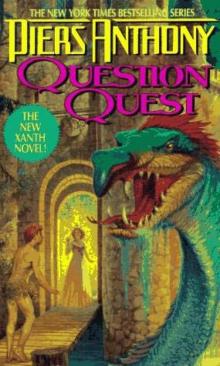 Question Quest
Question Quest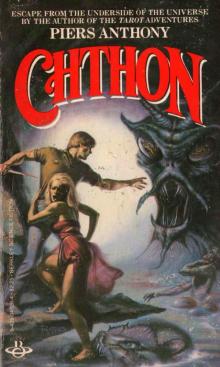 Chthon
Chthon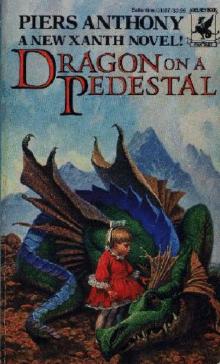 Dragon on a Pedestal
Dragon on a Pedestal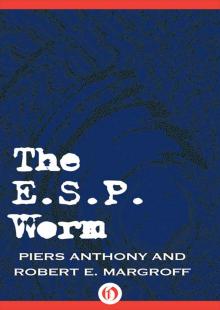 E. S. P. Worm
E. S. P. Worm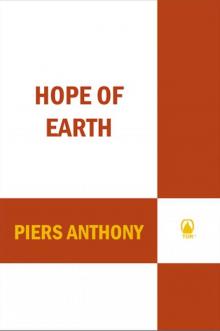 Hope of Earth
Hope of Earth The Series Boxed Set
The Series Boxed Set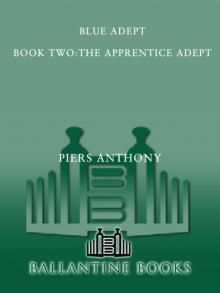 Blue Adept
Blue Adept The Sopaths
The Sopaths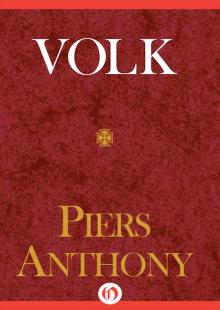 Beetle Juice
Beetle Juice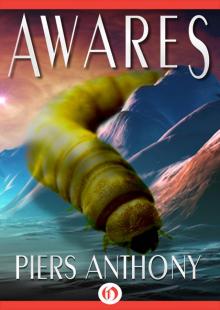 Awares
Awares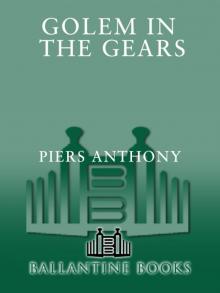 Golem in the Gears
Golem in the Gears Geis of the Gargoyle
Geis of the Gargoyle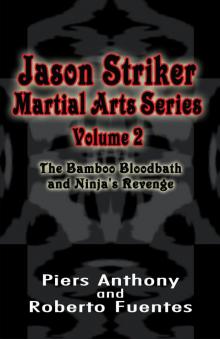 Bamboo Bloodbath and Ninja's Revenge
Bamboo Bloodbath and Ninja's Revenge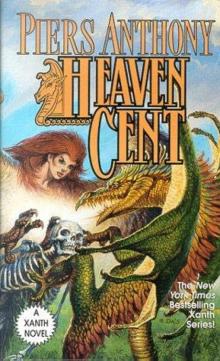 Heaven Cent
Heaven Cent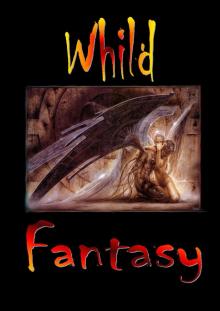 Neq the Sword
Neq the Sword Pandora Park
Pandora Park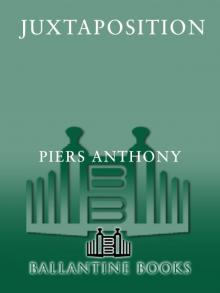 Juxtaposition
Juxtaposition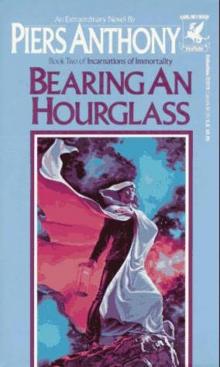 Bearing an Hourglass
Bearing an Hourglass Dragon Assassin
Dragon Assassin Board Stiff
Board Stiff Virtual Mode
Virtual Mode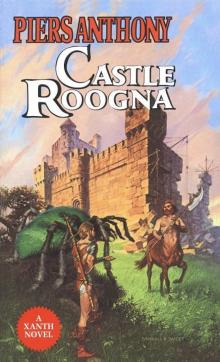 Castle Roogna
Castle Roogna Aliena Too
Aliena Too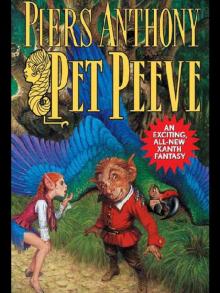 Pet Peeve
Pet Peeve The Metal Maiden Collection
The Metal Maiden Collection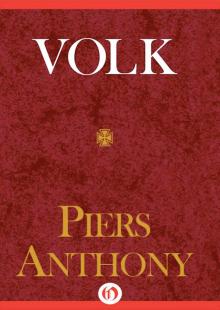 Volk
Volk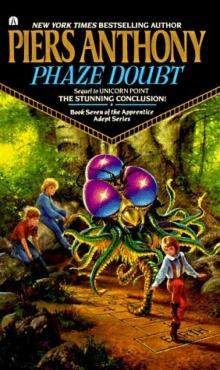 Phaze Doubt
Phaze Doubt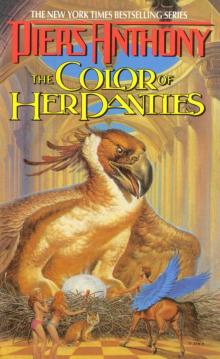 The Color of Her Panties
The Color of Her Panties Amazon Slaughter and Curse of the Ninja Piers Anthony
Amazon Slaughter and Curse of the Ninja Piers Anthony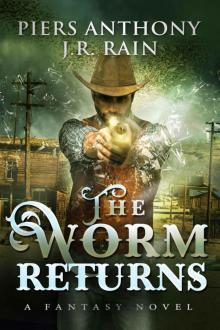 The Worm Returns
The Worm Returns Zombie Lover
Zombie Lover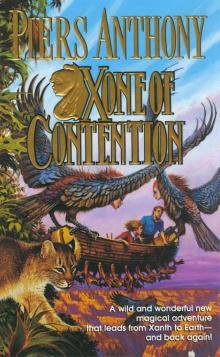 Xone of Contention
Xone of Contention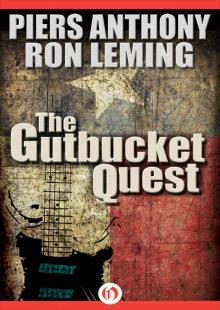 The Gutbucket Quest
The Gutbucket Quest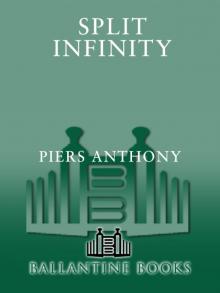 Split Infinity
Split Infinity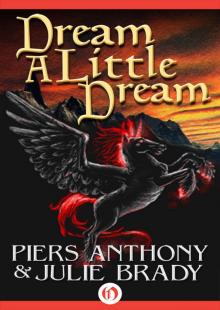 Dream a Little Dream: A Tale of Myth and Moonshine
Dream a Little Dream: A Tale of Myth and Moonshine Balook
Balook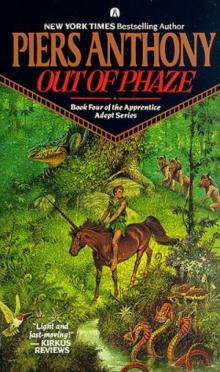 Out of Phaze
Out of Phaze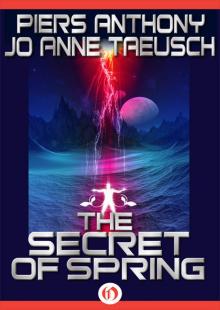 The Secret of Spring
The Secret of Spring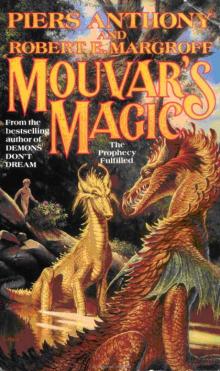 Mouvar's Magic
Mouvar's Magic Cube Route
Cube Route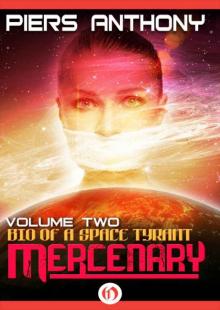 Mercenary
Mercenary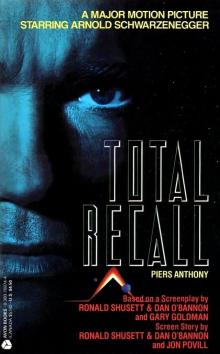 Total Recall
Total Recall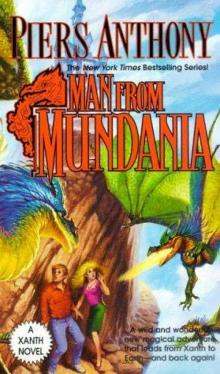 Man From Mundania
Man From Mundania The Magic Fart
The Magic Fart Letters to Jenny
Letters to Jenny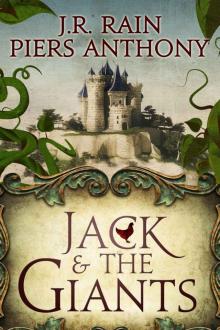 Jack and the Giants
Jack and the Giants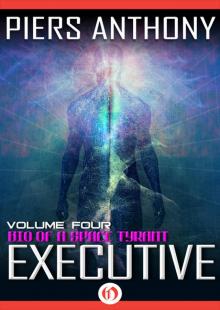 Executive
Executive Robot Adept
Robot Adept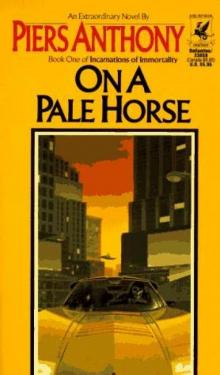 On A Pale Horse
On A Pale Horse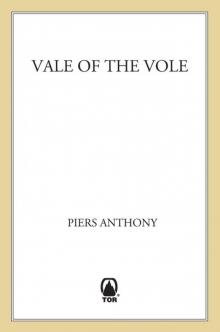 Vale of the Vole
Vale of the Vole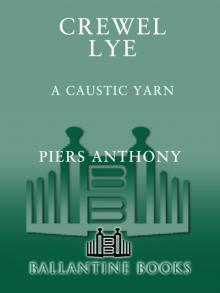 Crewel Lye
Crewel Lye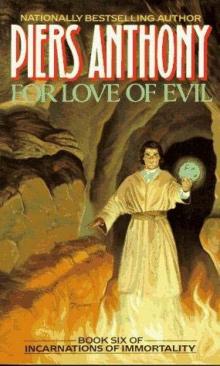 For Love of Evil
For Love of Evil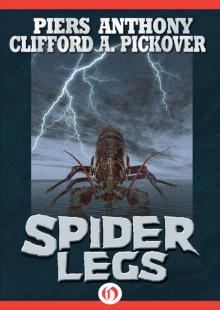 Spider Legs
Spider Legs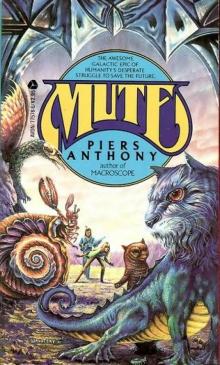 Mute
Mute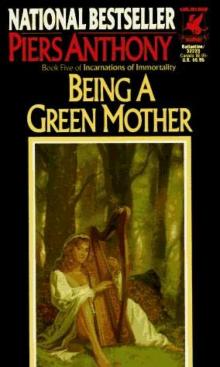 Being a Green Mother
Being a Green Mother Hair Suite
Hair Suite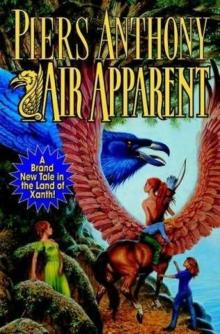 Air Apparent
Air Apparent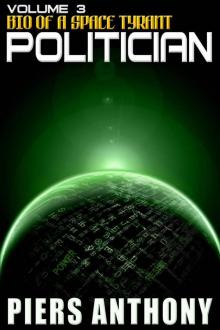 Politician
Politician Aliena
Aliena Phthor
Phthor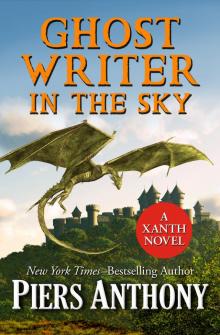 Ghost Writer in the Sky
Ghost Writer in the Sky Pornucopia
Pornucopia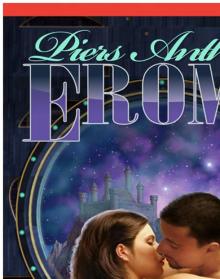 Eroma
Eroma Shepherd
Shepherd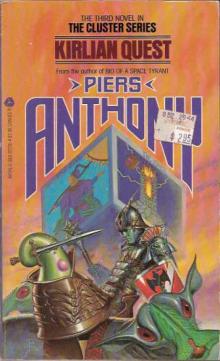 Kirlian Quest
Kirlian Quest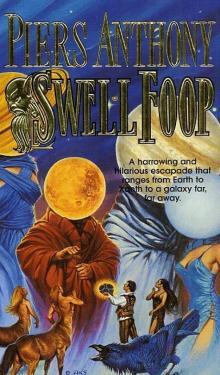 Swell Foop
Swell Foop God of Tarot
God of Tarot If I Pay Thee Not in Gold
If I Pay Thee Not in Gold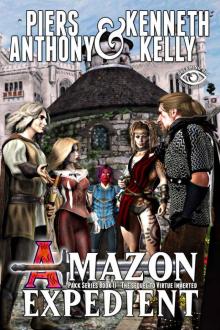 Amazon Expedient
Amazon Expedient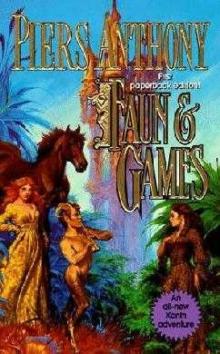 Faun & Games
Faun & Games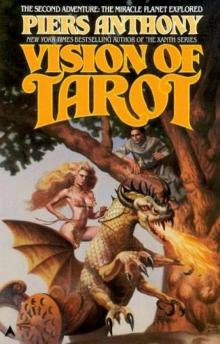 Vision of Tarot
Vision of Tarot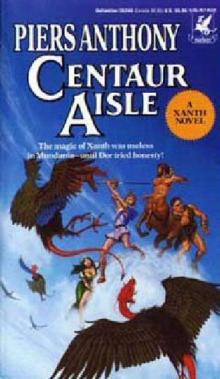 Centaur Aisle
Centaur Aisle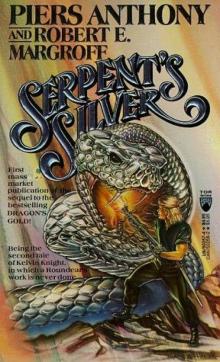 Serpent's Silver
Serpent's Silver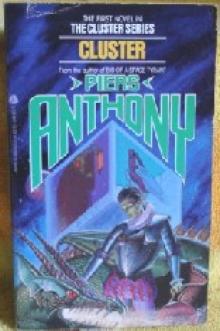 Cluster
Cluster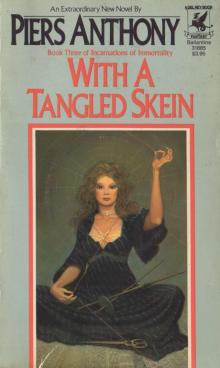 With a Tangled Skein
With a Tangled Skein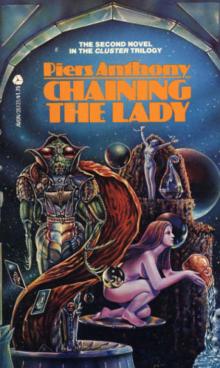 Chaining the Lady
Chaining the Lady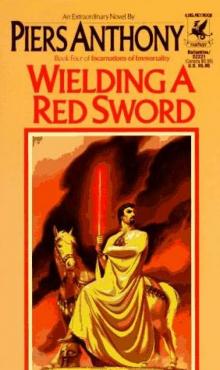 Wielding a Red Sword
Wielding a Red Sword Key to Chroma
Key to Chroma WereWoman
WereWoman Isis Orb
Isis Orb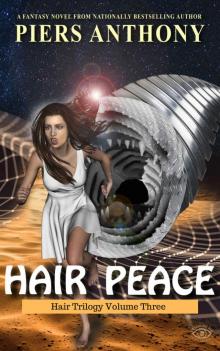 Hair Peace
Hair Peace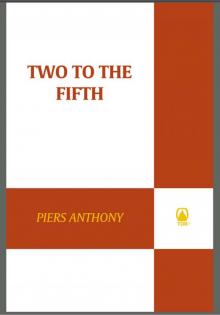 Two to the Fifth
Two to the Fifth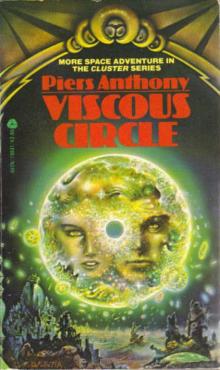 Viscous Circle
Viscous Circle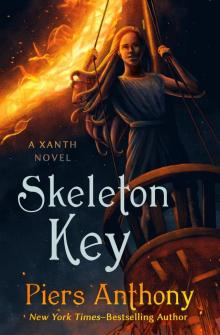 Skeleton Key
Skeleton Key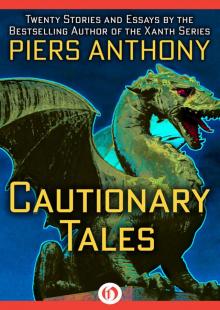 Cautionary Tales
Cautionary Tales The Source of Magic
The Source of Magic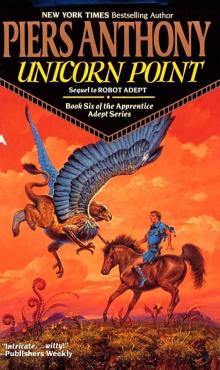 Unicorn Point
Unicorn Point Writer's Retweet
Writer's Retweet Demons Don't Dream
Demons Don't Dream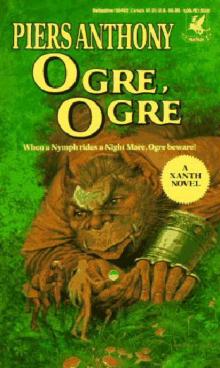 Ogre, Ogre
Ogre, Ogre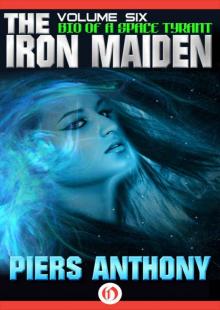 The Iron Maiden
The Iron Maiden Tortoise Reform
Tortoise Reform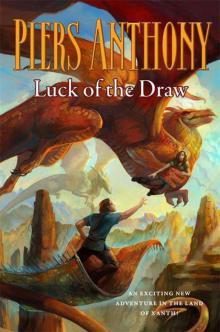 Luck of the Draw
Luck of the Draw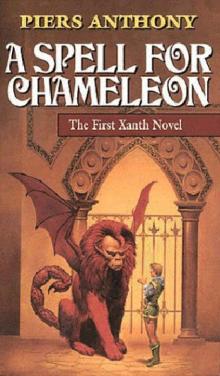 A Spell for Chameleon
A Spell for Chameleon Yon Ill Wind
Yon Ill Wind Currant Events
Currant Events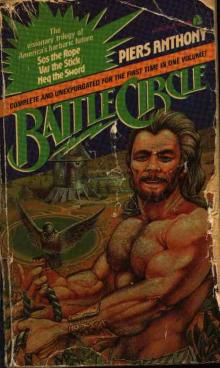 Var the Stick
Var the Stick And Eternity
And Eternity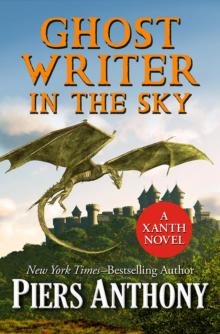 Kiai! & Mistress of Death
Kiai! & Mistress of Death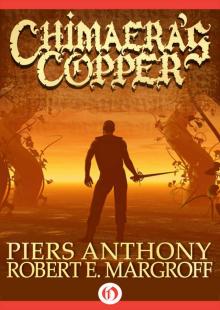 Chimaera's Copper
Chimaera's Copper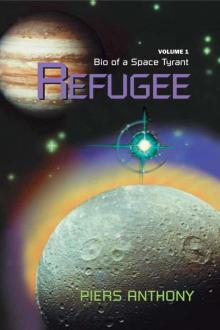 Refugee
Refugee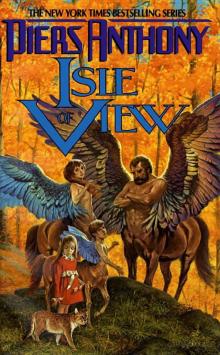 Isle of View
Isle of View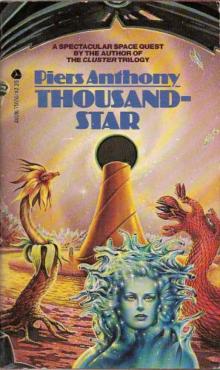 Thousandstar
Thousandstar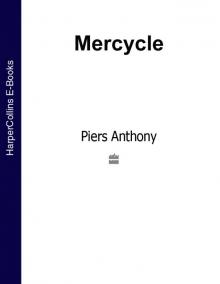 Mer-Cycle
Mer-Cycle Service Goat
Service Goat Five Portraits
Five Portraits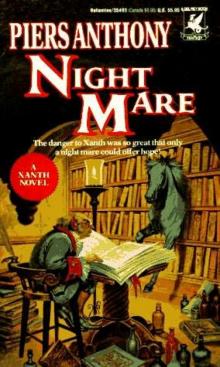 Night Mare
Night Mare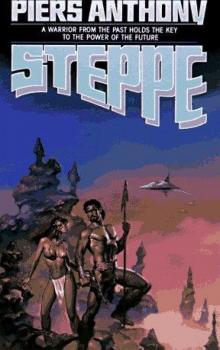 Steppe
Steppe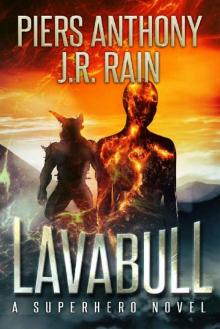 Lavabull
Lavabull Well-Tempered Clavicle
Well-Tempered Clavicle Aladdin Relighted
Aladdin Relighted Aladdin and the Flying Dutchman
Aladdin and the Flying Dutchman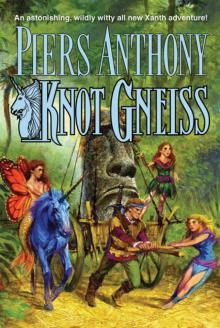 Knot Gneiss
Knot Gneiss Roc and a Hard Place
Roc and a Hard Place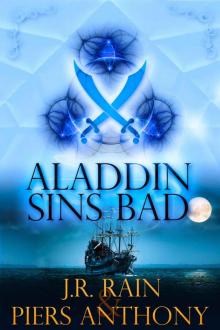 Aladdin Sins Bad
Aladdin Sins Bad Flytrap
Flytrap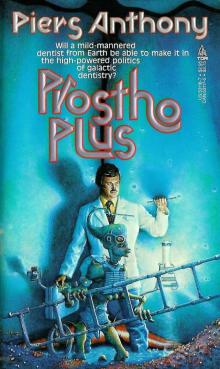 Prostho Plus
Prostho Plus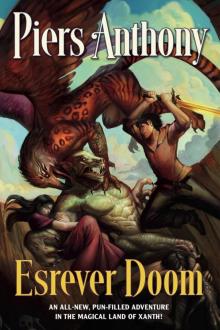 Esrever Doom
Esrever Doom Hair Power
Hair Power The Journey
The Journey Virtue Inverted
Virtue Inverted Of Man and Manta Omnibus
Of Man and Manta Omnibus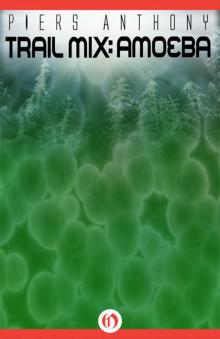 Trail Mix: Amoeba
Trail Mix: Amoeba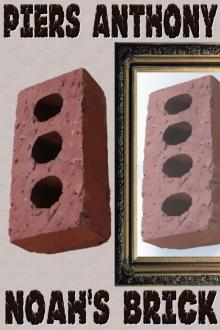 Noah's Brick
Noah's Brick Odd Exam
Odd Exam Magenta Salvation
Magenta Salvation Jest Right
Jest Right Fire Sail
Fire Sail Chthon a-1
Chthon a-1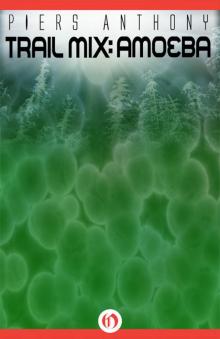 Amoeba
Amoeba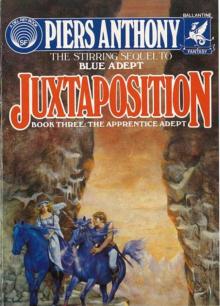 Juxtaposition aa-3
Juxtaposition aa-3 Pira
Pira THE CATERPILLARS QUESTION
THE CATERPILLARS QUESTION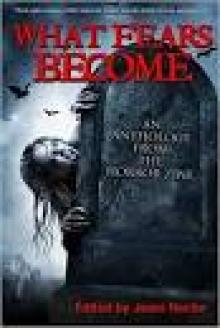 What Fears Become: An Anthology from The Horror Zine
What Fears Become: An Anthology from The Horror Zine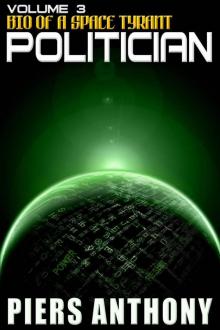 Bio of a Space Tyrant Vol. 3. Politician
Bio of a Space Tyrant Vol. 3. Politician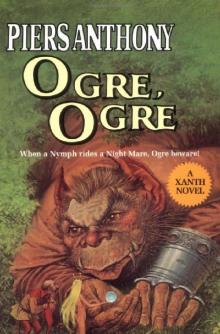 Ogre Ogre x-5
Ogre Ogre x-5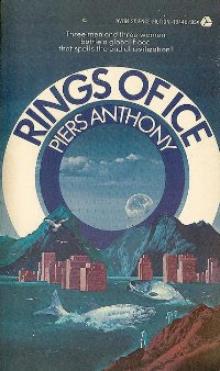 Rings of Ice
Rings of Ice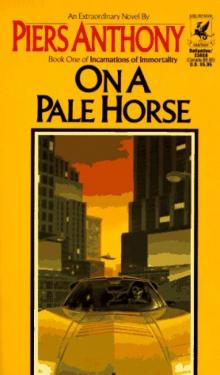 On a Pale Horse ioi-1
On a Pale Horse ioi-1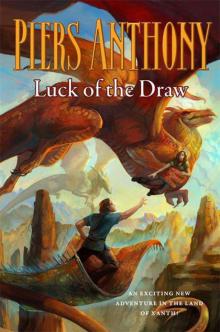 Luck of the Draw (Xanth)
Luck of the Draw (Xanth)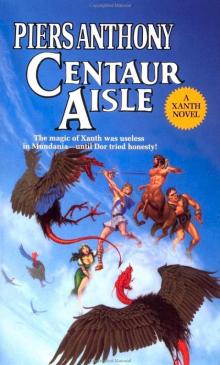 Centaur Aisle x-4
Centaur Aisle x-4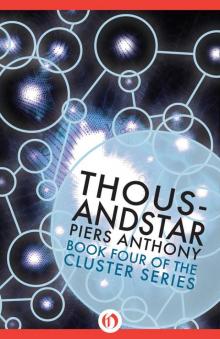 Thousandstar (#4 of the Cluster series)
Thousandstar (#4 of the Cluster series)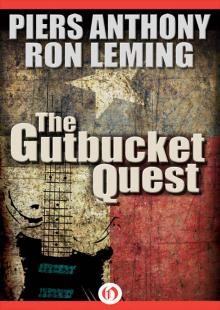 Gutbucket Quest
Gutbucket Quest Isle of Woman (Geodyssey)
Isle of Woman (Geodyssey)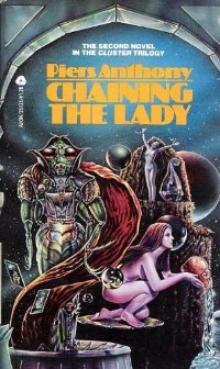 Chaining the Lady c-2
Chaining the Lady c-2 To Be a Woman
To Be a Woman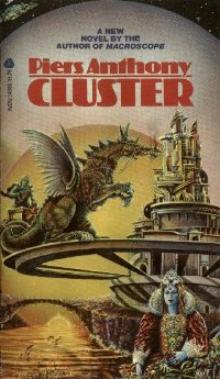 Cluster c-1
Cluster c-1 Battle Circle 2 - Var the Stick
Battle Circle 2 - Var the Stick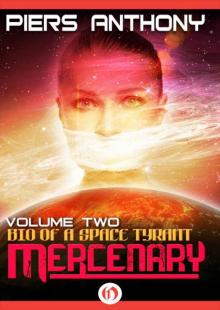 Mercenary (Bio of a Space Tyrant Book 2)
Mercenary (Bio of a Space Tyrant Book 2)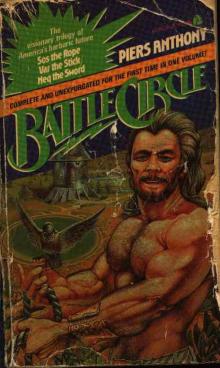 Battle Circle 1 - Sos the Rope
Battle Circle 1 - Sos the Rope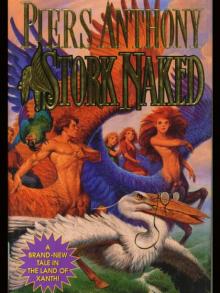 Xanth 30 - Stork Naked
Xanth 30 - Stork Naked Secret of Spring
Secret of Spring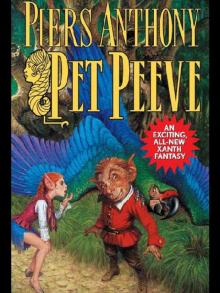 Xanth 29 - Pet Peeve
Xanth 29 - Pet Peeve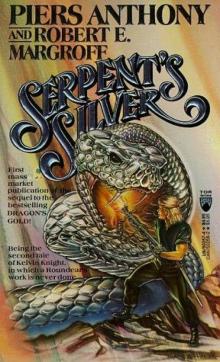 Serpents's Silver
Serpents's Silver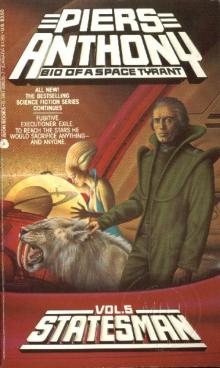 Statesman by Piers Anthony
Statesman by Piers Anthony Out of Phaze aa-4
Out of Phaze aa-4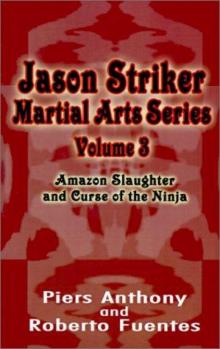 Amazon Slaughter & Curse of the Ninja
Amazon Slaughter & Curse of the Ninja